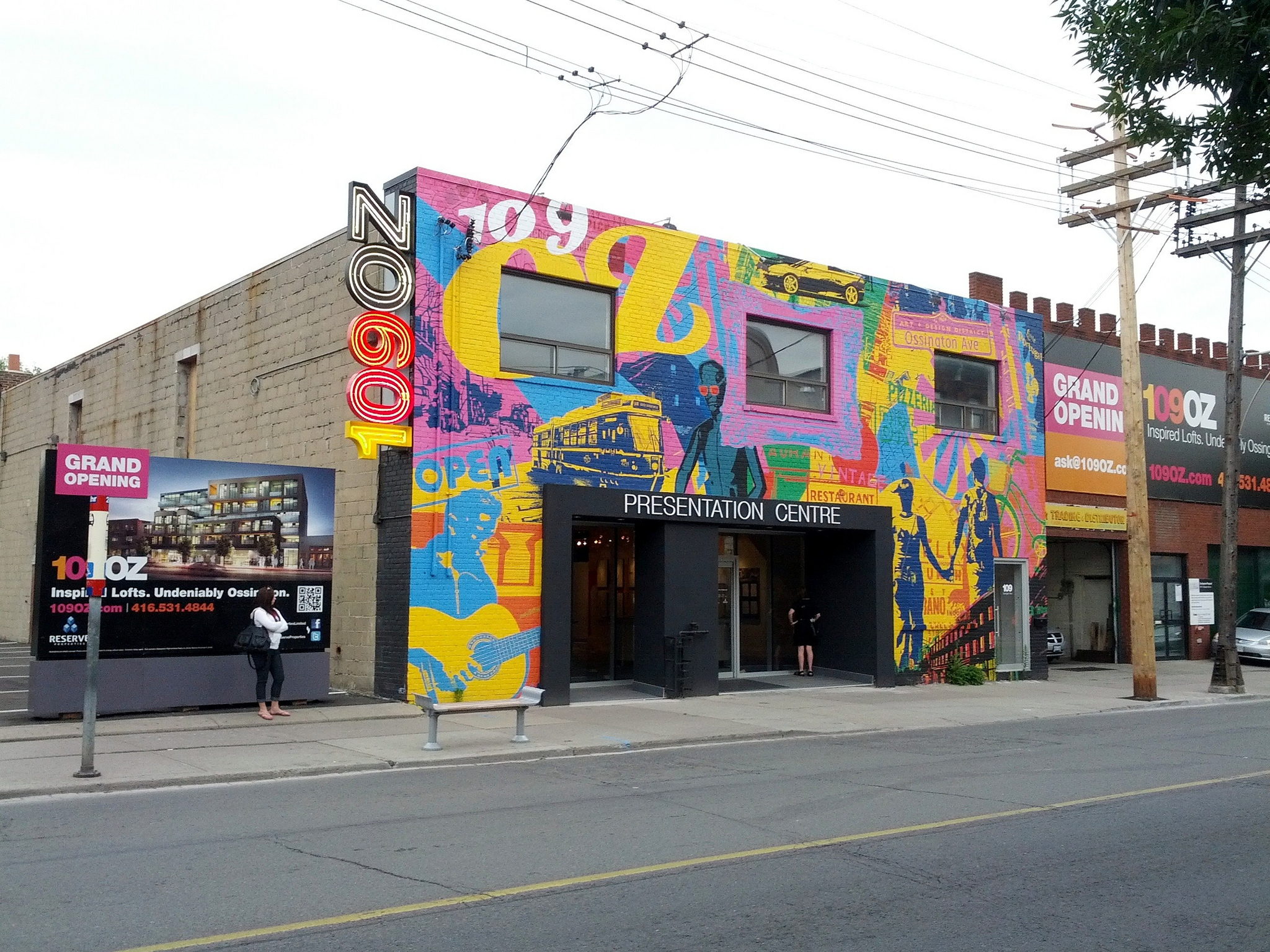
Amid auto repair shops and fading karaoke lounges; an influx of bars, restaurants and boutiques has transformed the stretch of South Ossington into Toronto's latest and greatest destination for drinking and dining. Cozy up to locals at Sweaty Betty's, Dakota Tavern or the Crooked Star.
The History of Ossington Avenue
Ossington Avenue is named after the ancestral Nottingham home of the Denison family who were early land-owners around the street's southern end. The origin of Ossington Avenue lies in John Graves Simcoe's 1793 plan for a western military road from York, the new capital of Upper Canada. The initial conception of this road ran West down contemporary Queen Street West (then Lot Street), hugging the shore of Lake Ontario onward to Niagara.
Following the War of 1812, this route was deemed too vulnerable to American invasion, and was destroyed. A more northerly route was substituted, and cut by the Queen's Rangers and completed by 1817.
The 560-meter north–south segment of Dundas Street would become the contemporary "Ossington Strip", and was developed as a mixed commercial and residential street beginning in the 1840s. The Ontario Provincial Lunatic Asylum was opened at the foot of Dundas and Queen Street in 1850. From the 1850s to around 1900, the area was a centre of Toronto's meatpacking industry, with slaughterhouses and stockyards on the blocks and laneways just to the east
Defining Ossington Avenue would be confusing until a late 1910s. By 1884, a street named "Ossington Avenue" had been constructed, running north from Dundas to Bloor Street, and by 1890, as far as St. Clair (though the section north of Davenport was eventually renamed to Winona Drive, and contemporary Ossington Avenue ends at Davenport). As of 1884, "Dundas Street" is a T-shaped entity comprising the Ossington Strip and contemporary Dundas Street West, west of the Garrison Creek bridge at contemporary Crawford Street. By 1894, the eastern spur of Dundas Street has been renamed, with "Arthur Street" consistently applied to contemporary Dundas Street West eastward from the Ossington Strip. Finally, by 1923, contemporary naming is in place, with the Ossington Strip having been renamed "Ossington Avenue" (continuously with the segment running northward from contemporary Dundas and Ossington) and Arthur Street having been renamed "Dundas Street" (continuously with the segment running eastward from contemporary Dundas and Ossington).
As Toronto expanded West and other retail facilities opened, the Ossington Strip became an area of industrial uses, including automotive repairs and storage facilities. By 2003, this area became known for crime and the known presence of Vietnamese criminal gangs and street drug peddlers. A double murder in a karaoke bar that year sparked neighbourhood action in concert with the police to cut down on crime.
By 2007, the low rents of stores along Ossington became attractive after rents along the Queen Street West increased. This led to an influx of bars, restaurants and stores. By 2009, the number of bars and restaurants created tension with residents of the surrounding neighbourhood, and licensing controls were imposed to stop the opening of more businesses of the same kind. In 2010 the restrictions on new restaurants along Ossington were lifted, leading to the opening of several new establishments.
Ossington Avenue Today
At its south end, Ossington starts at Queen Street and goes north, up a hill to Dundas Street. South of Queen is the Centre for Addiction and Mental Health's (CAMH) Queen Street Health Centre complex. From Shaw Street west to Dovercourt, the south side of Queen street is used for CAMH facilities. In summer 2012 CAMH extended Ossington south of Queen, calling it Lower Ossington Avenue.
From this intersection north to Dundas, Ossington is largely lined with low-rise retail storefronts, typically with apartments on upper floors; other buildings house light industrial uses. Most buildings along this stretch date to the 19th century, and many have been restored in their conversion into restaurants and trendy stores, which have attracted visitors from around the Greater Toronto Area and made the area an attraction for international tourists visiting Toronto.
Running north/south from Queen Street West to Davenport Road, you can find lots of unique hole-in-the-wall boutiques, pubs and bars that offer live music for every style of music lover, and restaurants offering some seriously authentic eats. There is a sense of originality and spirit as you walk the long street of Ossington. You can sense the history and physically witness the beautiful, rich architecture as you walk by the storied buildings that brim with memories.
Ossington Real Estate
Properties on Ossington Avenue consist of freehold townhomes, detached homes, condos and condo townhomes. Homes are circa 1880’s and 1890’s. The majority of homes in this neighbourhood are Victorian row and semi-detached houses. Many of these houses have been extensively renovated and converted into two and three family dwellings. Every year, more condos pop up along Ossington Avenue which cater to the young, hip crowd that frequents the neighbourhood.
Looking for the best of Ossington?
Parks
Schools
Please click here for a comprehensive list of schools in Ossington..
Restaurants
La Banane: Stylish, brass-accented eatery with a raw bar serving inventive, French-influenced cuisine.
Bar Sybanne: Relaxed outlet serving Middle Eastern and Moroccan sharing plates, plus signature cocktails.
Foxley: Cozy destination known for its ceviche, plus a small plates menu mixing Asian and Pan-Latin tastes.
Cafés
.I Deal Coffee and Wine Bar: Coffee roaster and café serving locally sourced bakery fare in a space with pews & vintage chairs.
Filosophy Pastry and Espresso Bar: Sweet and savoury Greek pastries, plus other baked goods, soup & espresso served in a snug space.
Bang Bang Ice Cream & Bakery: Ice cream sandwiches on house-made cookies, cups, cones and to-go tubs in a white & pale-wood space.








